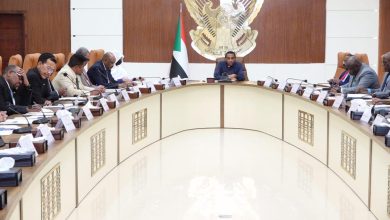Banking Expert Walid Dalil Writes: Economic Crisis and Proposals For Solutions
The Sudanese economy is currently going through a real crisis in light of regional and international changes on the one hand and the consequences of the war on the other hand, which together have led to a large and unprecedented imbalance in macroeconomic indicators such as inflation rates, interest rates, the exchange rate and the balance of payments.
At the forefront of these indicators comes a sharp and sudden collapse in the value of the local currency against the US dollar, as the price of the dollar reached about 1,550 pounds at the beginning of 2024, achieving its highest levels ever compared to the Sudanese pound, which led to an increase in demand and demand to buy the dollar as a safe haven in the face of… Declining confidence in the local economy and deteriorating value of its currency.
Below are the most prominent negative effects resulting from the rise in the dollar exchange rate and how to confront them:
First: High inflation: One of the most prominent repercussions of the rise in the price of the dollar is the very high rate of inflation, exceeding 20%, which is the highest rate. This is due to the high cost of imports and imported production inputs of raw materials, spare parts, machinery, and the cost of war, which was directly reflected in the prices of local goods and services.
The most important solutions proposed to contain inflation are:
Raising interest rates to reduce cash liquidity and reduce consumption and unnecessary investments, which contributes to reducing aggregate demand.
Subsidizing basic commodities such as food and fuel to reduce their prices directly for low-income consumers.
Review customs duties and sales taxes to reduce the cost of imports.
Encouraging investments aimed at increasing local production and reducing dependence on imported goods.
Second: Deterioration in purchasing power. High inflation resulted in a significant erosion in individuals’ incomes and savings, which led to a sharp deterioration in living standards and an increase in poverty rates. The middle-income class has been particularly affected because their incomes are fixed and they are unable to keep up with the increase in the cost of living.
Possible solutions include:
Raising the minimum wage and salaries of government and public sector workers to maintain purchasing power.
Supporting social security programs and aid for the poorest groups.
Providing credit facilities for micro, small and micro enterprises to support the middle-income class.
Third: Shortage of goods and services. Sudanese markets witnessed a severe shortage of many basic goods as a result of the difficulty of importing them due to the weakness of the local currency against the dollar and the cost of the war. This also led to the faltering of major development and infrastructure projects due to the cessation of importing construction supplies and spare parts from abroad. This can be confronted through:
Establishing mechanisms to ensure the import of basic goods at subsidized or concessional prices for periods of scarcity and high global prices.
Expanding local agricultural and industrial production and supporting producers to bridge the gap with imports.
Reviewing the priorities of national projects to focus on those with high economic feasibility at the current stage.
Fourth: Capital flight and foreign investment flows. The Sudanese economy witnessed the exit of huge flows of capital and foreign investments outside the country due to weak investors’ confidence in the stability of the economy and the inevitable result of the war, which led to the depletion of project financing sources and the disruption of development plans.
This can be addressed through:
Enacting new laws to stimulate investment and guarantees for transferring profits and capital abroad.
Providing tax and customs incentives to attract investments in export and import-substitute industries.
Issuing high-yield dollar bonds to attract local savings in dollars instead of keeping them outside the country.
Fifth: Risks of a debt crisis: The cost of servicing dollar-denominated external debt has risen significantly with the rise in global interest rates, threatening a real debt crisis.
Possible solutions include:
Rescheduling debts with foreign creditors to postpone installments until the economy stabilizes.
Agreement with the International Monetary Fund (IMF) and the World Bank to obtain soft loans to cover the financial deficit without resorting to external borrowing.
Diversify sources of external financing and increase borrowing in currencies other than the dollar.
Sixth: Economic Reform Program: The government launched an ambitious economic reform program in cooperation with the International Monetary Fund aimed at achieving economic stability in the medium and long term, but its positive effects are still absent on the ground so far.
For this program to be successful, it must:
Full commitment to implementing all terms and performance standards agreed upon with the IMF without procrastination.
Taking bold decisions to reduce subsidies, raise taxes, and reduce the wage bill in the state budget.
Firmly combat financial and administrative corruption to rationalize public spending and increase revenues.
Creating a climate to encourage local and foreign investments in the real economy.
In conclusion, Sudan is facing a stifling economic crisis imposed by regional and global changes, in addition to structural defects in its local economy and the war. This crisis worsened sharply with the collapse of the value of the local currency against the dollar, which led to an unprecedented rise in inflation rates, declining living standards, and faltering economic activity.
Confronting these challenges requires concerted efforts at the governmental and popular levels, in addition to the support of the international community. Bold corrective economic policies should be adopted aimed at restoring overall stability and the internal and external balances of the economy, through a comprehensive reform program in coordination with the International Monetary Fund and international financial institutions.
At the same time, effective social protection policies and programs must be put in place to limit the repercussions of these reforms on the poorest and most vulnerable classes, so that the most vulnerable groups do not bear the burden of correcting the course of the economy on their own.



